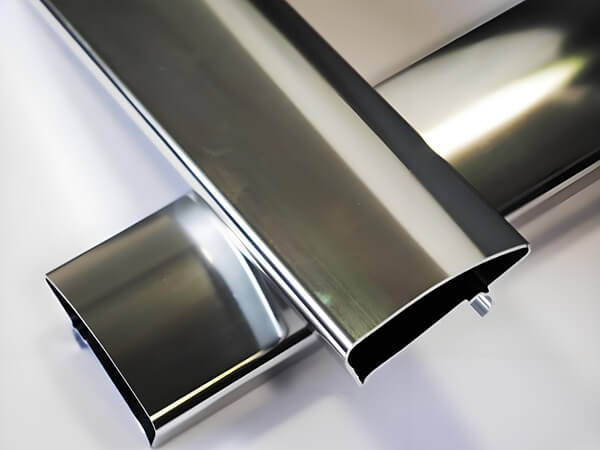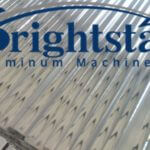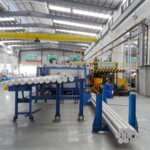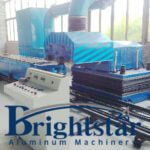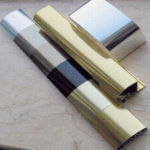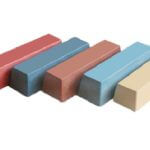What is the difference between mechanical polishing and chemical polishing aluminum profile?
What is the difference between mechanical polishing and chemical polishing aluminum profile?
Both mechanical polishing and chemical polishing aim to achieve a smooth and bright surface on aluminum profiles, but they take fundamentally different approaches:
Mechanical Polishing:
Method: Uses physical force. A polishing machine with a rotating wheel or belt abrades the aluminum surface with a polishing compound containing abrasives.
This gradually removes imperfections and refines the surface for a desired finish.
Pros:
Versatile: Applicable to various aluminum profiles and finishes.
Controllable: Offers precise control over the polishing process to achieve different levels of shine.
Scalable: Adaptable to small or large production runs with proper equipment.
Cons:
Skill-dependent: Reliant on operator skill for a uniform and high-quality finish.
Time-consuming: Can be a multi-step process, especially for a mirror finish.
Limited reach: May struggle to remove deeper scratches or imperfections.
Chemical Polishing:
Method: Utilizes a chemical reaction. The aluminum profile is submerged in a specially formulated solution that dissolves the aluminum at a microscopic level.
This controlled removal evens out the surface, achieving a smooth and reflective finish.
Pros:
Uniform finish: Consistent chemical reaction ensures a uniform finish, ideal for mirror-like surfaces.
Deeper reach: Can address imperfections and scratches that might be difficult for mechanical polishing.
Less labor-intensive: Requires less operator skill compared to mechanical polishing.
Cons:
Strict control: Precise control of bath concentration, temperature, and timing is crucial to avoid over-etching the aluminum.
Environmental concerns: The chemicals used can be hazardous and require proper handling and disposal.
Alloy limitations: May not be suitable for all aluminum alloys, particularly those with high magnesium content.
Choosing the Right Method:
Desired Finish: If a mirror-like finish is crucial and deeper imperfections need addressing, mechanical and chemical polishing might be preferable.
Process Control: If precise control over the polishing level is needed, or if environmental concerns are a priority, mechanical polishing might be a better option.
Aluminum Alloy: Consider the alloy type. If the aluminum has a high magnesium content, mechanical polishing might be the safer approach.
Mechanical polishing of aluminum profiles involves using physical tools to achieve a smooth and bright surface on the aluminum.
Here’s a breakdown of the process:
Method:
An aluminum profile polishing machine is used, which typically has a rotating wheel or belt.
The polishing wheel/belt comes into contact with the aluminum profile at high speed.
A polishing compound, often a paste or cream containing abrasives, is applied to the wheel/belt or directly to the aluminum profile.
Action:
The abrasive particles in the polishing compound scratch and buff the surface of the aluminum profile, removing imperfections and flattening out microscopic peaks and valleys.
As the polishing progresses, finer and finer abrasive compounds are used to gradually refine the surface and achieve a high gloss finish.
Types of Polishing Wheels/Belts:
Non-woven wheels: Often used for initial cutting and scratch removal.
Cotton or wool buffs: Used for finer polishing and achieving a high shine.
Polishing Compounds:
The type of polishing compound used depends on the desired finish.
Compounds come in varying degrees of abrasiveness, from coarse (for initial scratch removal) to very fine (for achieving a mirror finish).
Advantages of Mechanical Polishing:
Versatility: Applicable to a wide variety of aluminum profiles and finishes.
Controllability: Offers precise control over the polishing process to achieve the desired level of shine.
Scalability: Can be adapted to handle small or large production runs.
Disadvantages of Mechanical Polishing:
Requires Skill: The operator’s skill level can significantly impact the uniformity and quality of the finish.
Time Consuming: A multi-step process that can be time-consuming, especially for achieving a mirror finish.
May Not Reach Deep Scratches: May struggle to remove deeper scratches or imperfections.
Alternatives to Mechanical Polishing:
Chemical Polishing: Uses a chemical bath to remove material uniformly from the aluminum surface, achieving a smooth finish.
Electrolytic Polishing: Similar to chemical polishing but uses an electric current to control the polishing process.
Overall, mechanical polishing is a widely used method for achieving a desired finish on aluminum profiles.
It offers versatility and control but requires skilled operators and can be time-consuming.
Chemical polishing, in contrast to mechanical polishing, utilizes a controlled chemical reaction to achieve a smooth and bright surface on aluminum profiles.
Here’s a breakdown of the process:
Chemical Bath:
An immersion tank is filled with a chemical solution specifically formulated for aluminum polishing.
The solution typically contains:
Strong acids like phosphoric or sulfuric acid to dissolve the aluminum at a microscopic level.
Other components like surfactants and brighteners to regulate the reaction and achieve a uniform finish.
Process:
The aluminum profile is pre-cleaned to remove any contaminants like grease or oil that might hinder the polishing process.
The profile is then submerged in the chemical bath for a controlled time and temperature.
The chemical reaction dissolves the aluminum on the profile’s surface, preferentially targeting microscopic peaks and imperfections.
This controlled removal of material evens out the surface, resulting in a smooth and reflective finish.
Advantages of Chemical Polishing:
Uniform Finish: The consistent chemical reaction across the entire surface ensures a uniform finish, ideal for achieving a mirror-like shine.
Reaches Deep Scratches: Chemical polishing can remove imperfections and scratches that might be difficult to address with mechanical polishing methods.
Less Labor-intensive: Doesn’t require the same level of operator skill compared to mechanical polishing.
Disadvantages of Chemical Polishing:
Strict Process Control: The concentration, temperature, and timing of the chemical bath need to be precisely controlled to achieve the desired results and avoid over-etching the aluminum.
Environmental Concerns: The chemicals used can be hazardous and require proper handling and disposal procedures.
Not Suitable for All Alloys: May not be suitable for all types of aluminum alloys, particularly those with high magnesium content.
Applications:
Chemical polishing is often used for applications requiring a high-quality, mirror-like finish on aluminum profiles, such as:
Architectural panels
Decorative trim
Automotive parts
Electronic components
Overall, chemical polishing offers a way to achieve a smooth and bright finish on aluminum profiles with a high degree of uniformity.
However, it requires careful control of the chemical process and proper safety measures.
In conclusion, both methods have their strengths and weaknesses.
The best choice depends on the specific requirements of the project, desired finish, and the type of aluminum being used.

